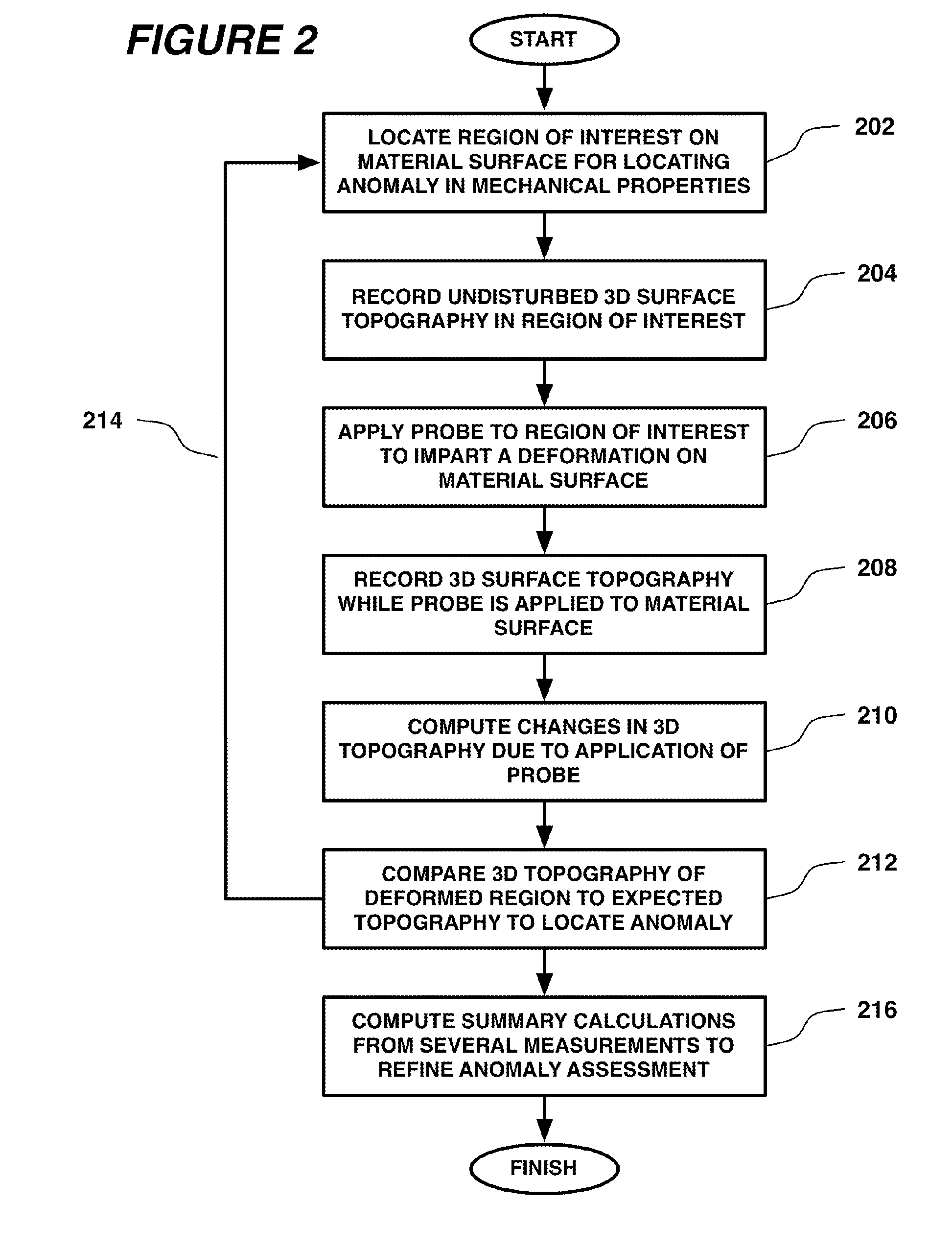Systems and Methods for Measuring Mechanical Properties of Deformable Materials
a technology of mechanical properties and deformation, applied in the field of systems and methods for determining the properties of materials, can solve the problems of inconvenient or impossible grasping of bulk materials for the purpose of imparting loads or deformations, inability to contact tissue with instruments, inability to detect and detect the mechanical properties of tissue, etc., and achieves the effect of minimal operator manipulation and fast measuremen
- Summary
- Abstract
- Description
- Claims
- Application Information
AI Technical Summary
Benefits of technology
Problems solved by technology
Method used
Image
Examples
Embodiment Construction
[0021]According to aspects of the present invention, a device for imparting a deforming pressure to the surface of the material (a probe) is used in combination with 3D topography acquisition to measure the resulting deformation in the surface. Information from the probe and the topography system is used to compute the bulk mechanical properties of, and anomalies within, the material using appropriate mathematical and materials models. For simplicity here, bulk mechanical properties and anomalies in those properties, along with dimensions and shapes of surface features, will together be termed properties of the material.
[0022]FIG. 1 details the steps in an example embodiment for measuring the bulk mechanical properties of a deformable material. In step 102, a region of interest (ROI) on the surface of the material of interest is located. It is not in general necessary to remove the material from its setting into an apparatus. As such, the embodiment provides a non-destructive approa...
PUM
 Login to View More
Login to View More Abstract
Description
Claims
Application Information
 Login to View More
Login to View More - R&D
- Intellectual Property
- Life Sciences
- Materials
- Tech Scout
- Unparalleled Data Quality
- Higher Quality Content
- 60% Fewer Hallucinations
Browse by: Latest US Patents, China's latest patents, Technical Efficacy Thesaurus, Application Domain, Technology Topic, Popular Technical Reports.
© 2025 PatSnap. All rights reserved.Legal|Privacy policy|Modern Slavery Act Transparency Statement|Sitemap|About US| Contact US: help@patsnap.com



